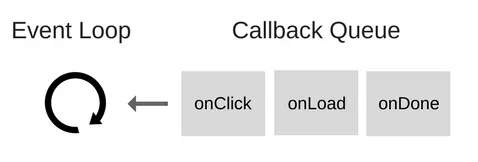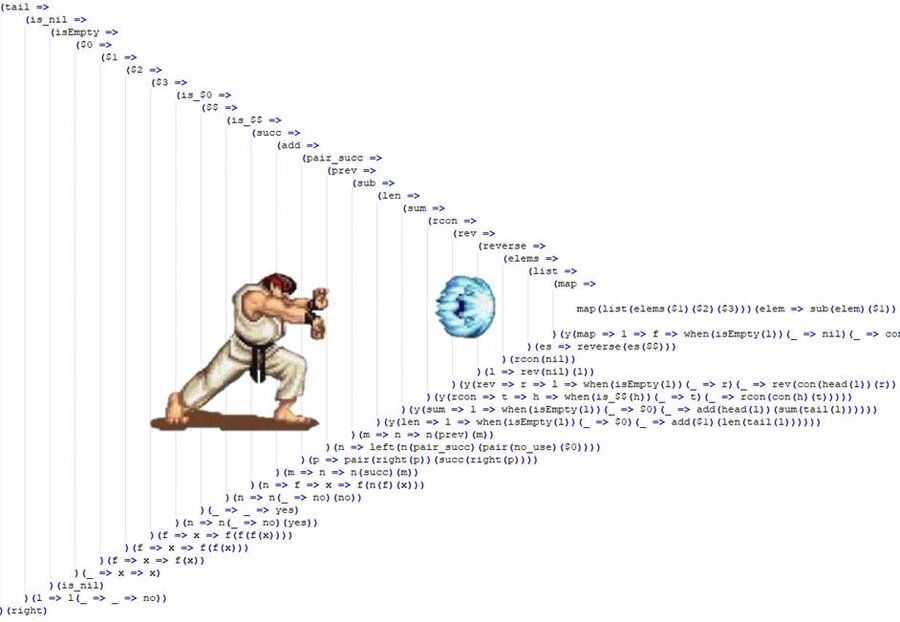理解 Node.js 中非同步處理與 Event Loop 的關係
PrefacePermalink
1
2
3
4
5
6
7
8
9
10
(() => {
setTimeout(() => {
console.log(1)
})
Promise.resolve().then(() => {
console.log(2)
})
console.log(3)
})()
console.log(4)
工程師的面試,常常會遇到這種要求給出執行順序的考題
你能正確的判斷出他的順序嗎?
What is Event and Event Handler in JavaScriptPermalink
JavaScript 最早是用於網頁當中的腳本語言
它主要是為了處理 user 的 action, 像是 onClick, onChange 等等的事件
而這些事件,都需要特定的處理程式來進行處理
就是 Event Handler

即使你定義了 Event Handler,因為你無法預測使用者何時為動作
所以你實際上是定義了一個 callback function
當 事件 發生的時候,這個 callback 會負責處理所有相對應的動作
First Class FunctionPermalink
JavaScript 的 callback 其實是 first class function
簡單來說,first class function 就是 function 擁有跟 variable 一樣的地位
比如說
- Function 可以被當作參數丟來丟去
- Function 可以被當成 variable 被 assign
- 符合 Closure
ClosurePermalink
Lexical ScopingPermalink
我們都知道! local variable 是有特定的 scope 才能存取的
在 function 裡的 variable 也是有自己的 scope
1
2
3
4
5
6
7
8
9
10
11
function createGreeter(greeting) {
return function(name) {
return `${greeting}, ${name}!`;
}
}
const morningGreeter = createGreeter("Good Morning");
const eveningGreeter = createGreeter("Good Evening");
console.log(morningGreeter("Alice")); // Outputs "Good Morning, Alice!"
console.log(eveningGreeter("Bob")); // Outputs "Good Morning, Bob!"
可以看到 createGreeter 裡面回傳了一個 function
但它會 access 外部的 variable greeting
這個特性稱為 Lexical Scoping
Closure 的特性是結合了 function 以及 Lexical Scoping
上述的例子,createGreeter 形成了一個 Closure
而任何 in-scope 的變數們都會存在於 Closure 之中(i.e. Lexical Scoping)
所以這就是為什麼當呼叫的時候,仍然可以存取 greeting 變數
Node.js ArchitecturePermalink
JavaScript 最初是用於網頁的腳本語言
由於他是 single thread 的,他要怎麼處理 user 的相關 event 呢?
單一執行緒,勢必會 block 住整個網頁,整體的使用者體驗是不好的
瀏覽器有提供非同步的執行環境,所以不會被 block 住
但 callback 其實是會造成所謂的波動拳
所以 Promise(ES6) 以及 Async/Await(ES2017) 被引入
LibuvPermalink

ref: Design overview
要把 JavaScript 搬到 server 上執行,對應的非同步 I/O 也需要一個環境
Node.js 為此也提供了一個由 libuv 實現的 non-blocking I/O 的環境
它本身是屬於 event driven 的架構
早期,在 node 0.4 的時候是透過 libev 以及 libeio 實現的
但現在改為 libuv
主要原因是因為
- libev 內部是使用 select 系統呼叫,而開發團隊對於 select 的效能表現不滿意
- libev 在當時對於 windows 的兼容性並不佳
libuv 本身抽象化了不同系統平台的非同步操作,並提供統一界面
比如說 Linux 是用 epoll, Mac 是用 kqueue
在每個平台上使用各自最優秀的 polling mechanism 來達到最好的效果
Handles and RequestsPermalink
libuv 的兩個核心概念是 handle 和 request
基本上使用者可以透過這兩個概念來操作非同步 I/O
handles 是一個 long-lived 的物件
透過它去下 requests
requests 就是你想要做的事情
比如說開啟一個檔案之類的
之後就交給 libuv 去監控管理那些 file descriptor
當完成之後,callback 就會被呼叫
Event LoopPermalink
JavaScript 的 code 是跑在 Event Loop 上的
Event Loop 本質上會先註冊 event 的 callback(同步或者是非同步)
然後會依序執行 event queue 當中的 callback
並適時註冊新的 event callback
除此之外,所有的 non-blocking asynchronous 操作都是在 Event Loop 上執行
它真的只是一個無窮迴圈,根據 libuv/src/unix/core.c
1
2
3
4
5
6
7
8
9
10
11
12
13
14
15
16
17
18
19
20
21
22
23
24
25
26
27
28
29
30
31
32
33
34
35
36
37
38
39
40
41
42
43
44
45
46
47
48
49
50
51
52
53
54
55
56
57
58
59
60
61
62
63
64
65
66
int uv_run(uv_loop_t* loop, uv_run_mode mode) {
int timeout;
int r;
int can_sleep;
r = uv__loop_alive(loop);
if (!r)
uv__update_time(loop);
/* Maintain backwards compatibility by processing timers before entering the
* while loop for UV_RUN_DEFAULT. Otherwise timers only need to be executed
* once, which should be done after polling in order to maintain proper
* execution order of the conceptual event loop. */
if (mode == UV_RUN_DEFAULT && r != 0 && loop->stop_flag == 0) {
uv__update_time(loop);
uv__run_timers(loop);
}
while (r != 0 && loop->stop_flag == 0) {
can_sleep =
uv__queue_empty(&loop->pending_queue) &&
uv__queue_empty(&loop->idle_handles);
uv__run_pending(loop);
uv__run_idle(loop);
uv__run_prepare(loop);
timeout = 0;
if ((mode == UV_RUN_ONCE && can_sleep) || mode == UV_RUN_DEFAULT)
timeout = uv__backend_timeout(loop);
uv__metrics_inc_loop_count(loop);
uv__io_poll(loop, timeout);
/* Process immediate callbacks (e.g. write_cb) a small fixed number of
* times to avoid loop starvation.*/
for (r = 0; r < 8 && !uv__queue_empty(&loop->pending_queue); r++)
uv__run_pending(loop);
/* Run one final update on the provider_idle_time in case uv__io_poll
* returned because the timeout expired, but no events were received. This
* call will be ignored if the provider_entry_time was either never set (if
* the timeout == 0) or was already updated b/c an event was received.
*/
uv__metrics_update_idle_time(loop);
uv__run_check(loop);
uv__run_closing_handles(loop);
uv__update_time(loop);
uv__run_timers(loop);
r = uv__loop_alive(loop);
if (mode == UV_RUN_ONCE || mode == UV_RUN_NOWAIT)
break;
}
/* The if statement lets gcc compile it to a conditional store. Avoids
* dirtying a cache line.
*/
if (loop->stop_flag != 0)
loop->stop_flag = 0;
return r;
}
Event Loop PhasePermalink
上述程式碼實作,它執行了滿多東西的,但重點在所謂的 phase
Event Loop 總共有 6 個 phase
- timers(
uv__run_timers) - pending(
uv__run_pending) - idle, prepare(
uv__run_idleanduv__run_prepare) - poll(
uv__io_poll) - check(
uv__run_check) - closing(
uv__run_closing_handles)
Event Loop 初始化的時候它會註冊所有 event 與其相對應的 callback
這些 callback 會放在各個 phase 自己獨立的 FIFO queue 當中
當執行到對應的 phase 的時候,Event Loop 會讀取 queue 中的 event 並執行相對應的 callback 直到
- 沒有任何的 callback 需要執行
- callback 執行數量已經達到上限
- timeout(preemption)
注意到 Event Loop 是從 Poll phase 開始
- 讀取新的 I/O event, 並執行相對應的 callback(幾乎是全部的 callback, 但有例外)
- 執行
setImmediate的 callback - 執行 close callback
- 執行
setTimeout以及setInterval的 callback - pending, idle, prepare
setTimeout與setImmediate如果都在 main module 裡面執行
他們的執行順序是未知的,可以確定的是他們都是執行在下一個 tick
一個完整的 Event Loop 稱為一個 tick
Event Loop TasksPermalink
因為 main thread 的職責是執行 JavaScript
當它遇到
- 同步的 task(作業系統底層沒有提供非同步版本)
- 舉例來說 DNS 或是 File System
- CPU-intensive 的 task
的時候,就會將其交由其他人(Worker Pool(Thread Pool) or Task Offloading)來執行
Event Loop 的重點在於執行 JavaScript 的程式碼,如果遇到會卡住的 task
不論是需要等待抑或著是需要執行一段時間的程式碼,這些 task 都應該交由他人執行
不要去嘗試以任何方式卡住 Event Loop
當 Event Loop 執行順利的情況下 Node.js 就可以很好的 scale
callback 也要盡量的小,Event Loop 才能公平的 schedule callback
Worker Pool(Thread Pool)Permalink
worker pool 顧名思義就是他有很多個 worker 等著執行工作
每一個 worker 都是一條 thread
你會問,可是 JavaScript 不是 single thread 的嗎?
對,但是 worker pool 這邊是 multi thread 的
只有執行 JavaScript(或者說執行 Event Loop) 的 main thread 是 single thread
為什麼不使用 child process?
因為光是維護那些 child process 的工作量就可能導致你沒時間去管理 worker pool
最終導致 fork bomb
CPU 吃重的任務會交給 worker pool 執行(比如說數學計算)
它會透過內建的 C++ API 來做
這在某種程度上會增加 overhead(因為要從 JS 轉到 C++)
比如說 binding 的 overhead 以及溝通的成本(serialize 以及 deserialize)
針對內建沒有提供的 addon, 你也可以自己撰寫 C++ addons 來做
Task OffloadingPermalink
檔案的操作通常我們可以讓作業系統幫我們監控
比如說當檔案開啟完成的時候通知我
當事情完成的時候,通知回 Event Loop 並執行其對應的 callback
Event Loop 儲存的實際上是 file descriptor 而不是 events
所以才收的到 完成的訊號
Task QueuePermalink
Event Loop 除了各自 phase 擁有自己的 callback queue 之外
還有另外三種 “task queue”,分別是 nextTick Queue, microtask Queue 和 macrotask Queue
我們在看 libuv 的程式碼的時候並沒有分的那麼細,甚至都沒看到他們在哪裡
libuv 本質上在處理的都是 macrotask(像是 I/O)
你在網路上看到在說 microtask queue 這種東西
在 Node.js 當中是他是由 V8 處理的(並不屬於 libuv),所以當然在 libuv 裡面看不到
So, only libuv provides the eventloop features in nodejs?
Yes, the only exception being the microtask queue, i.e. what Promises, which is provided by V8,
but I think it would be odd to consider that an event loop or part of an event loop (in particular,
because it doesn’t actually involve events of any kind, it’s just a queue of code that should be run in the future).
ref: event loop: which eventloop is used by nodejs? eventloop of v8 or eventloop of libuv?
回到當初破題的問題,執行順序究竟為何
1
2
3
4
5
6
7
8
9
10
(() => {
setTimeout(() => {
console.log(1)
})
Promise.resolve().then(() => {
console.log(2)
})
console.log(3)
})()
console.log(4)
根據 Understanding setImmediate()
Event Loop 執行的順序為 nextTick queue ![]()
microtask queue ![]()
macrotask queue
-
nextTick queue- 包含
process.nextTick
- 包含
-
microtask queue- 包含
promise
- 包含
-
macrotask queue- 包含
setTimeout,setInterval,setImmediate
- 包含
所以我們可以知道答案是 3421
首先,任何同步的 code 一定是優先執行的
因為第一行的 anonymous function 在它被定義的時候就被呼叫了(第九行)
然後最外層的同步 code 也會被執行
所以我們可以得出 34 這個部份答案
再來就是裡面的 promise 以及 setTimeout
我們知道 microtask queue 一定會先被執行,所以 2 緊隨其後
最後才是 setTimeout 的 1
setTimeout會在 Event Loop 的最後一個階段才被執行
ReferencesPermalink
- JavaScript Asynchronous Programming and Callbacks
- Why are functions not considered first class citizens in C
- First-class Function
- Closures
- LXJS 2012 - Bert Belder - libuv
- Design overview
- The Node.js Event Loop: Not So Single Threaded
- Overview of Blocking vs Non-Blocking
- 【python】asyncio的理解与入门,搞不明白协程?看这个视频就够了。
- 【python】await机制详解。再来个硬核内容,把并行和依赖背后的原理全给你讲明白
- do promises get resolved between the end of eventloop phase and before the start Phase of the eventloop?
- event loop: which eventloop is used by nodejs? eventloop of v8 or eventloop of libuv?

Leave a comment